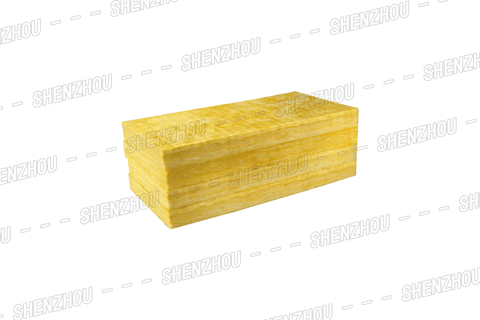
What materials are commonly used for exterior wall insulation?
6/5/20245 min read

External wall insulation is an indispensable part of modern architecture, aimed at improving the insulation performance of buildings, reducing energy consumption, and creating a more comfortable and energy-saving living environment for residents. So, what materials are commonly used for exterior wall insulation? This article will provide you with a detailed answer to this question.
Categories
Popular
Applications of Glass Wool Board:
Interior Wall Compartments:
Enhances the functionality and aesthetics of interior spaces.
Ceiling Systems:
Provides effective insulation for ceilings, contributing to energy efficiency.
Insulation of Iron Sheet Air Ducts or Bellows:
Ideal for insulating ductwork, ensuring thermal efficiency.
Sound Absorption and Noise Reduction:
Reduces noise levels in machine rooms, creating a quieter working environment.
Exterior Wall Insulation:
Offers insulation for residential building exteriors, contributing to energy savings.
Glass Wool Insulation





Firstly, we need to understand the basic classification of exterior wall insulation materials. According to the intrinsic composition of materials, exterior wall insulation materials can be divided into two categories: inorganic insulation materials and organic insulation materials. Inorganic insulation materials mainly include silicate insulation materials, ceramic insulation materials, foam cement, etc., while organic insulation materials mainly include EPS board, XPS board, polyurethane, etc.
Inorganic insulation materials are widely used in the field of construction due to their excellent fire resistance and durability. Silicate insulation materials have good insulation effects and high strength, and are suitable for building insulation under various climatic conditions. Ceramic insulation materials are known for their high temperature stability and chemical stability, and are particularly suitable for insulation in high-temperature industrial buildings. Foam cement, as a new type of inorganic insulation material, has multiple advantages such as lightweight, insulation, and sound insulation, and has gradually become a popular choice in the field of external wall insulation.
Organic insulation materials occupy a place in the building insulation market due to their excellent insulation performance and lower cost. EPS board is a lightweight, high-strength insulation material with excellent insulation effect and low water absorption rate. XPS sheets have higher compressive strength and lower thermal conductivity, making them suitable for buildings that require higher insulation performance. Polyurethane, as a high-performance insulation material, has excellent insulation and waterproofing properties, especially suitable for buildings with high requirements for insulation and waterproofing.
In addition to the common insulation materials mentioned above, there are also new types of exterior wall insulation materials constantly emerging. For example, vacuum insulated panels (VIP panels) have received widespread attention due to their ultra-low thermal conductivity and excellent insulation performance; Aerogel felt shows great potential in the field of building thermal insulation with its lightweight and efficient thermal insulation performance.
When selecting external wall insulation materials, it is necessary to consider the specific situation of the building comprehensively. For example, for high-rise or important buildings, priority should be given to inorganic insulation materials with excellent fire resistance performance; For some low rise or temporary buildings, low-cost organic insulation materials can be chosen. In addition, factors such as the construction performance, weather resistance, and environmental protection performance of insulation materials need to be considered.
In terms of construction, the construction methods and techniques of external wall insulation materials are also crucial. The correct construction method can ensure that the performance of insulation materials is fully utilized and improve the insulation effect. At the same time, attention should also be paid to safety issues during the construction process to ensure the safety of construction personnel and the stability of the building.
In terms of environmental performance, with the continuous improvement of people's environmental awareness, more and more exterior wall insulation materials are paying attention to environmental performance. For example, some new types of exterior wall insulation materials use recyclable and biodegradable raw materials to reduce environmental pollution; At the same time, some insulation materials also adopt environmentally friendly production processes and technologies in the production process, reducing the damage to the environment.
In summary, there are various types of exterior wall insulation materials, each with its own advantages and disadvantages. When selecting external wall insulation materials, it is necessary to comprehensively consider the specific situation of the building, and pay attention to factors such as construction methods and environmental performance. With the continuous development of technology, it is believed that more high-performance, environmentally friendly and energy-saving exterior wall insulation materials will emerge in the future, contributing to the sustainable development of the construction industry.

Why Choose SHENZHOU Glass Wool Board?
SHENZHOU® Glass Wool Board not only meets the essential requirements of thermal insulation but also excels in sound absorption and noise reduction. Its adaptability to various settings, coupled with the convenience of construction and installation, positions it as a leading choice for architects, builders, and contractors.
In conclusion, the broad application prospects of SHENZHOU® Glass Wool Board make it a comprehensive solution for enhancing comfort, energy efficiency, and acoustic performance across diverse projects. Choose SHENZHOU® for insulation solutions that go beyond expectations.










About Us
Click the button below to get more information about us
Newsletter
Click to subscribe for more information
Follow Us
Contact Us
Address
Dacheng town, Langfang City, Hebei province, China
Phone
+86 185 03165 626


